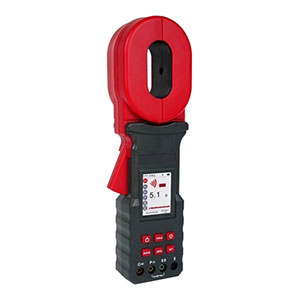Earth Resistance Tester Troubleshooting
Tue, Dec 05 by ATO.com
The earth resistance tester is a specialized instrument used for measuring the resistance of grounding systems. It finds extensive applications in various fields such as power systems, railway systems, buildings, and electrical equipment. However, due to various reasons, the earth resistance tester may encounter malfunctions, affecting its normal operation. This article ATO Store will introduce common causes of earth resistance tester failures and their troubleshooting methods.
Common Causes of Earth Resistance Tester Failures
- Poor Circuit Connections
Poor circuit connections are one of the common causes of earth resistance tester malfunctions. This type of failure can result in the tester not functioning properly and may even cause distorted measurement data. Loose or oxidized wiring, as well as damaged wires, can be reasons for poor connections. - Instrument Damage
The earth resistance tester may also experience hardware failures, such as power issues, damaged switches, or a malfunctioning display screen. These faults require the expertise of professional technicians for repair. - Environmental Factors
The operation of the earth resistance tester is susceptible to environmental factors, such as electromagnetic interference, temperature fluctuations, and humidity. These environmental influences can lead to deviations in test data and even impact the equipment's lifespan.
Solution
- Check Circuit Connections
When the earth resistance tester fails to function properly, checking the circuit connections is the most crucial step. Users should carefully examine the secureness of all wire connections. If there are loose or oxidized wires, cleaning and reconnecting operations should be performed. It is important to note that before inspecting circuit connections, the power to the tester must be disconnected to avoid any potential electrical shock risks. - Replace Damaged Components
If the earth resistance tester still fails to operate correctly after checking circuit connections, it may indicate damaged components or accessories. Such failures require the expertise of professional technicians for repairs. If you are a professional user of the earth resistance tester, you may already know how to replace damaged components. If you are not familiar with this knowledge, it is advisable to have professional repair personnel handle the operation.
- Consider Environmental Factors
To prevent environmental factors from affecting the tester, users need to pay attention to the working environment. The tester should be used in a dry and suitable temperature environment. If the tester is subjected to interference from electromagnetic devices during use, consider changing the tester's location or keeping other electromagnetic devices away from the tester's location. It is important to note that under any circumstances, the tester should not be placed in an environment where static electricity may occur. - Update Firmware Timely
The use of the earth resistance tester relies on firmware support. During usage, there may be a need to update the firmware to the latest version to ensure the tester's normal operation. Users can find the latest firmware version on the official website of the tester and follow the instructions for updating.
This article has introduced common causes of earth resistance tester failures and their troubleshooting methods. For users, any malfunction during daily work should be promptly addressed to ensure the stable operation and data accuracy of the tester.

